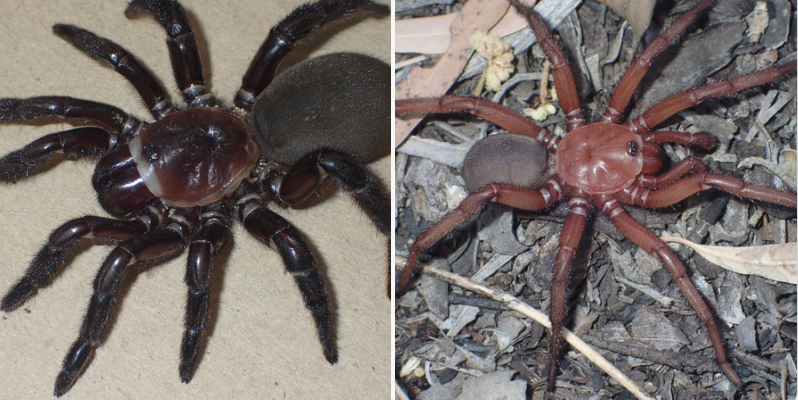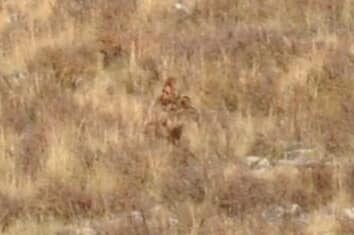
Australia is known for its incredible wildlife, but this next story might not be for the arachnophobes. Scientists have discovered a brand new enormous spider in Australia. Described a new “rare and giant,” the new species of trapdoor spider can only be found in central Queensland’s Brigalow Belt.
“The nocturnal species can be found burrowed inside trapdoors about the diameter of a 50-cent piece in the black soil around Eidsvold and Monto, west of Bundaberg,” according to ABC.
“The females, which are the larger trapdoor spiders of the two sexes, they’re almost five centimetres in body length,” the researcher who discovered the giant 8-legged monsters said.
The males are more brightly coloured. Like the females they spend most of their lives underground, only emerging to venture out and find a mate.
🕷️ A rare and giant species of trapdoor spider only found in the Brigalow Belt in Central Queensland has been described by @qldmuseum and named Euoplos dignitashttps://t.co/oQd4L6LUmM pic.twitter.com/nGz1sFx4xp
— Australian Science Media Centre (@AusSMC) March 17, 2023
The Guardian writes that the giant trapdoor spider, Euoplos dignitas, was discovered by researchers involved in Queensland Museum’s Project DIG, which has been running for the past four years to understand more about the state’s biodiversity.
What excites the lead researcher, Dr. Michael Rix, most about the discovery of the new creepy crawly, found in the black soil around Eidsvold and Monto, west of Bundaberg, is its size. The females, which can live for over 20 years in the wild, can reach about the size of a 50 cent piece.
“It’s very big for a trapdoor spider,” said Rix, who is also Queensland Museum’s principal scientist and curator of arachnology. “The females of this species can get up to five centimetres in body length.”
The new species, the discovery of which was published in the Journal of Arachnology, plays an important role in the leaf litter ecosystem, helping to control insect populations.
“Scientists are concerned about the future of the Euoplos dignitas as the area they have been found in has been heavily cleared for agriculture and other uses.
‘They’re not very good at getting around the landscape and dispersing – for example, compared to a flying insect,” Dr. Rix told The Daily Mail.
He added that they can take up to eight years to mature and start breeding and said further surveys needed to be done into them.”
Luckily for anyone with arachnophobia, Rix added: “They’ve got these really cryptic trapdoors in these woodland habitats on the ground and most people wouldn’t even realise that they’re there.”
[Read More: March Madness Hairdo Taking Over The Internet]









